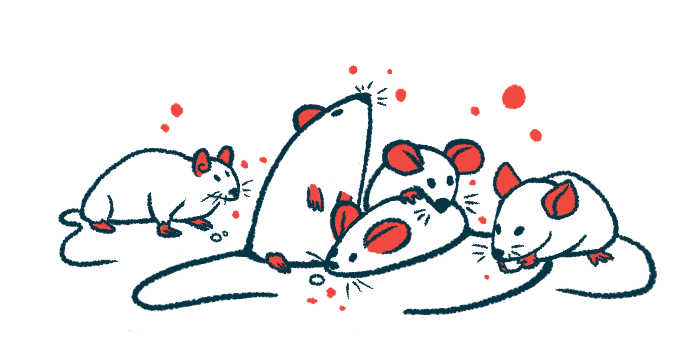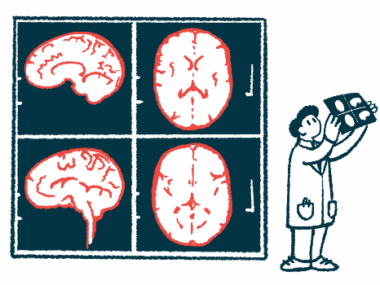Hydrogel can boost survival of precursor nerve cells to brain
More cells matured into dopaminergic neurons with collagen hydrogel: Study
Written by |

Encapsulating precursor nerve cells in a collagen hydrogel can enhance the efficacy of stem cell transplantation to the brain, a potential treatment to replace dopamine-producing nerve cells that are lost in people with Parkinson’s disease, according to a preclinical study.
“Our hydrogel nurtures, supports and protects the cells after they are transplanted into the brain, and this dramatically improves their maturation and reparative ability,” Eilís Dowd, PhD, study lead at the College of Medicine, Nursing and Health Sciences at the University of Galway, in Ireland, said in a university press release.
“Ultimately, we hope that continued development of this promising gel will lead to a significant improvement in brain repair approaches for people living with Parkinson’s,” Dowd said.
The study, “Survival and maturation of human induced pluripotent stem cell-derived dopaminergic progenitors in the Parkinsonian rat brain is enhanced by transplantation in a neurotrophin-enriched hydrogel,” supported by research grants from The Michael J. Fox Foundation for Parkinson’s Research (MJFF), was published in the Journal of Neural Engineering.
Parkinson’s symptoms are caused by the progressive loss of dopaminergic neurons, the specialized nerve cells that produce dopamine, a chemical messenger in the brain.
Cell-based brain repair promising therapeutic approach for Parkinson’s
Cell-based brain repair is a promising therapeutic approach for Parkinson’s disease, whereby the lost dopaminergic neurons are replaced by the transplantation of healthy neurons. Such neurons can be derived from induced pluripotent stem cells, or iPSCs, that are reprogrammed from adult cells, such as skin cells, and converted into dopaminergic neurons.
In fact, stem cell-based therapies have already started clinical testing, including a trial evaluating bemdaneprocel, which demonstrated sustained efficacy 1.5 years after treatment, and another called STEM-PD.
However, iPSCs need to be transplanted into the brain very early in their maturation from stem cells to fully functional neurons. Even so, most transplanted cells do not fully mature into dopaminergic neurons once they are inside the brain.
Thus, “it is imperative to continue rigorous preclinical studies to identify methods to improve their outcome to maximise their reparative/reconstructive potential,” Dowd and her colleagues wrote.
Encapsulating cells in hydrogels made with collagen, the most abundant protein in connective tissue, has the potential to address many limitations of transplantation. These hydrogels act as a scaffold, shielding cells from immune responses, and can be infused with neurotrophic factors, proteins that induce the survival, development, and function of neurons.
Ultimately, we hope that continued development of this promising gel will lead to a significant improvement in brain repair approaches for people living with Parkinson’s.
Gel increased survival, function of dopaminergic neurons in previous rat study
In previous work, Dowd’s team encapsulated primary dopaminergic neurons in a collagen hydrogel loaded with a neurotrophic factor called GDNF. Transplantation with the specialized gel dramatically increased the survival and function of these cells in a rat model of Parkinson’s.
In this new study, the researchers tested the gel method using dopaminergic precursor cells (DAPs) derived from iPSCs (iPSC-DAPs). Cells were transplanted into the brain of a Parkinson’s rat model, with or without the gel, and with or without the neurotrophic factors GDNF and BDNF.
Surviving iPSC-derived cells were visible in all four groups as early as one week after transplantation. Still, the graft cells were significantly larger in the two groups treated with iPSC-DAPs in the hydrogel, with or without neurotrophic factors, than in the two groups without the hydrogel.
This suggested “not only was the hydrogel cytocompatible with these cells, the beneficial effects of the gel were already manifesting shortly after transplantation,” the researchers wrote.
Although the cells transplanted with the hydrogel stimulated a broader immune response, the researchers noted this was likely “a reflection of the larger graft size in the hydrogel groups.”
Cell survival increased eightfold with hydrogel
As assessed 20 weeks, or 4.6 months, after transplantation, neurotrophic-enriched iPSC-DAPs in the hydrogel were larger and more dispersed within the brain compared with cells transplanted alone, which were small and compact. When transplanted with the neurotrophic-enriched hydrogel, cell survival increased eightfold, and dopaminergic neuron maturation improved 16 times higher.
Comparably, significantly more iPSC-DAPs matured into dopaminergic neurons with the enriched hydrogel than without (11.2% vs. 2.1%). Furthermore, one in six rats given cells alone reached a dopaminergic maturation level of more than 5%, whereas all seven rats treated with enriched cells in the hydrogel achieved this outcome.
“This suggests that the neurotrophin-enriched hydrogel is having a beneficial effect on dopaminergic differentiation and maturation over and above the effect on progenitor survival,” the team wrote.
“Given the beneficial effects of this hydrogel on human iPSC-derived brain repair in this Parkinsonian rat model, further development of such hydrogel carriers is warranted to improve the survival, differentiation and overall outcome of stem cell-derived brain repair in Parkinson’s patients,” the researchers concluded.
Further development of the hydrogel, specifically to understand how the immune system in the brain reacts upon transplantation, is being supported by a $300,000 award from the MJFF.







